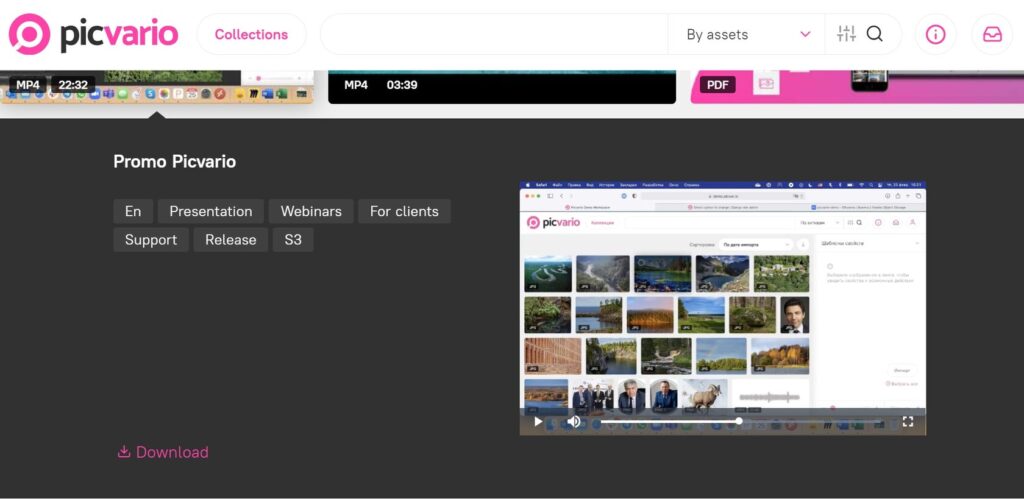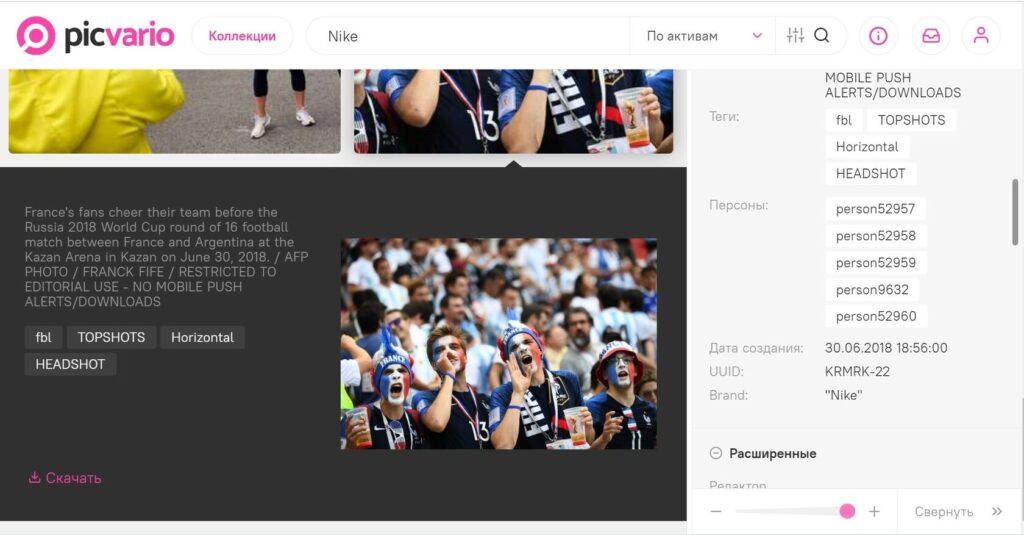DAM-systems deliver brand consistency
It’s with good reason that in any modern enterprise, the brand is considered one of the most important indicators of commercial success. A winning brand with the right marketing strategy may substantially increase the capitalisation of a business. However, the road isn’t without pitfalls. One difficulty is maintaining the consistency of the brand messaging. Let’s find out how not to lose face as it were and what tools employed to preserve brand consistency.
Brand image — what is the true value for company
In the modern world, a brand image what defines the true value of a company. In fact, it estimated that up to 70% of the valuation of a business is made up of brand goodwill. As a case study, notable companies such as Google or Apple benefit from a recognisable and consistent brand image. Digital behemoth Google has an estimated 30% of its valuation thanks to its brand identity. Apple in 2019 ascended to be one of the world’s most capitalised companies with a turnover comparable to the GDP of some countries.
On the other hand, some rebranding projects of well known multinational corporations have failed spectacularly, damaging the capitalisation of the business. Take apparel company GAP for instance, who in 2010 changed their long standing and instantly recognisable logo resulting in negative feedback and discontent from customers and designers. The latter were astonished that GAP green lit the use of the 70-year-old font Helvetica in the rebranding.
GAP attempted to deflect criticism after this relaunch, however, only six days after continuous bad and damaging publicity they decided to scrap the proposed changes, resulting in an eye watering estimated loss of 100 million dollars.

Brand: price of the human element
Following these extreme examples, marketologists have evolved to be defensive from straying from brand books and company internal guidelines. Yet, even large corporations with highly streamlined operations still unintentionally lose control of their intangible assets.
Consider soft drinks giant Pepsi who in 2008 subtly changed their logo to a mixed response from the public. The slight twist to the logo, adding a smiley look to the traditional trademark, wasn’t always apparent at first glance. The cost alone of the artwork to Pepsi reached one million dollars. Subsequently, to change all the logos over all the companies estate, such as uniforms, trucks, vending machines, advertising and so on, the estimated cost of this full rebranding project totalled a whopping 1.2 billion dollars.
What is more, the logo was perceived to have included a varying of the width of the white stripe or so called bold smile on the logo, so on different products the logo changed somewhat, the smile could become larger or narrower, as reported by Businessinsider. Perhaps, it was a designers’ concept but it’s most likely at the output stage to be down to human error or inconsistent delivery within the company departments.
Even Apple at one point, had to deal with human error during a public launch of one of their products. A photo image by Swiss photographer Sabine Liewald was displayed on the screen of the Apple Retina MacBook Pro shown during the presentation. However, this photograph was actually subject to restrictions; the photo licence had permission for internal use for layout purposes only, and not for commercial use. The error attributed to either staff oversight or that the photograph data didn’t include the relevant text to warn of restrictions on use. The photographer took Apple to court over copyright infringement.

Highwire act to stay on-message with your brand
The examples given illustrate how even the biggest companies lose their grip on brand image. Logos, fonts, colouring, images and design elements – all these are of primary importance for the brand and capitalisation of business. According to LucidPress, an average annual growth of income in relation to consistent brand image accounts for 23 %.
However, even in the smallest of enterprises, to maintain the appropriate integrity of advertising materials, company policies and brandbooks give rise to difficulties. New photographs, latest designs or approved brochures can get lost in mailboxes, messengers or cloud storages.
As you can imagine, in larger companies with high headcounts, countless versions of digital assets in multiple branches or outlets, it is complex to oversee channels of control. A standard control sequence time consuming procedure before approved sign off is achieved. Consistency and efficiency becomes elusive in case.
DAM system — Magic bullet for digital assets
As a matter of fact, the Digital Asset Management (DAM) system is the perfect solution to control branding integrity. The first DAM systems emerged around 2005. The market for DAM systems expands by 30 % annually in the USA alone, with a market value in 2020 of around 1.6 billion dollars.
Points of difference between DAM and other tools
Use of proxy files
One of the distinctive features of DAM systems is the ability to create proxy files which are low-resolution video files that take the place of larger-resolution files. This allows content to be seen or previewed without placing an unnecessary burden on computers handling the data. In the era of enhanced 4k and 8k videos, the feature is a must. This is also beneficial when working with photo images.

Metadata Workflow
Another plus is that all metadata, which include information about assets, copyright, licences and so on, is professionally handled by DAM systems. Professional use of media isn’t possible without this information. Metadata is crucial for operators to efficiently find relevant photos, through keywords, captions, dates and locations plus a multitude of other categories.
Data is already standardised and supported by all manufacturers of digital goods, including software used to process visual content.
DAM can enhance data using AI technology – such as facial recognition, plus automatic identification of texts, numerals and even car models. A powerful tool to maintain brand consistency is that as such DAM can identify and collate all images featuring logos on company media.

Integration with other systems
DAM systems allow the formulation of a unified data repository which accumulates all brand identity information and can be integrated with other systems such as CMS, social networks, messengers or other IT components, via API. Taking as an illustration, German industrialists Wurth, who sell goods through an expansive network of representatives. Currently the company consists of over 400 sub companies, with branches in 84 countries worldwide. Here, if the company updates a logo, it’s imperative to update throughout the entire network. A DAM system will facilitate such changes providing unified storage of visual assets. Logo changes are auto updated on all partner sites, in headed templates and in social networks.

Simple Arithmetics
Time is money, as the proverb goes. Every inefficient minute spent in a company can accumulate into a substantial sum at the end of a month.
Another important function of DAM systems is analytics. This allows birds eye view monitoring of staff productivity. For example, Picvario DAM system received 3,495 search requests over a week. Just imagine if all these requests had had to be processed manually, how much time employees would have spent to fulfil task. Thanks to DAM, employees can be freed from routine functions with time reallocated to other pressing projects.

DAM implementation can make instant savings on productivity costs. Using data from studies, it’s estimated that budgets for photo shooting and video recording tasks can be sliced in half by using materials within the existing archives, either previously unused or recycled media content. Time allocated to the description and categorization of assets can also be reduced by a quarter as AI is employed to automatically complement relevant keywords. Statistics say a third of working time is spent on the search of media files. With a DAM system, these problems are easily solved.





